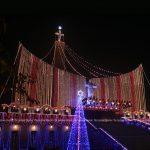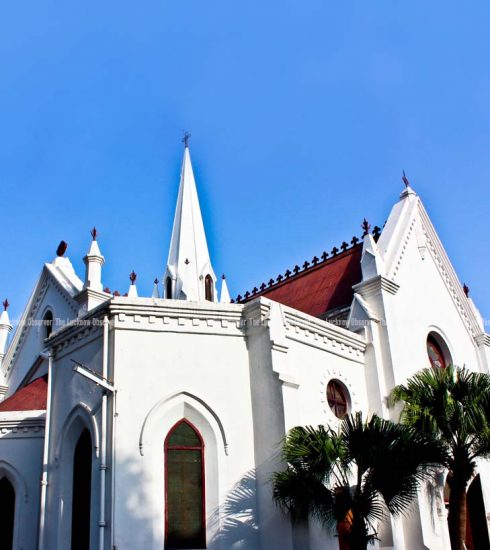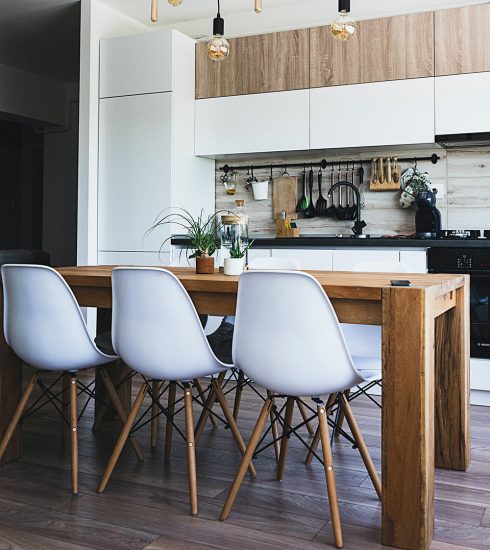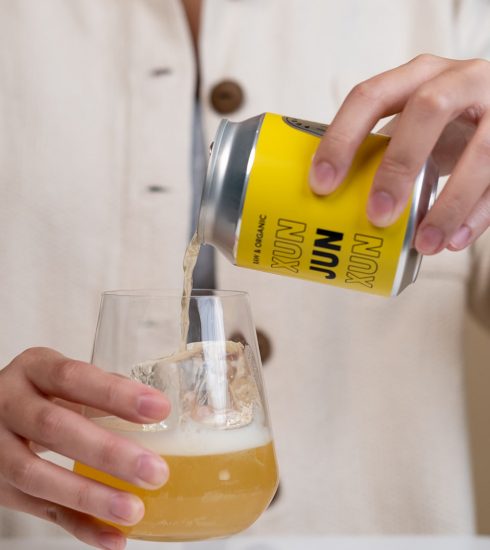Solah Shringaar
The Sixteen Gracious Adornments of Lakhnavi Beauties
“Thehro! Laga Aau’n Naino’n Mein Kajra,
Choti Mein Goonth Aau’n Phoolon Ka Gajra,
Main To Kar Aau’n Solah Shringar Re,
Thaare Rahiyo, Thaare Rahiyo O Baanke Yaar Re”
….. sings in Awadhi, the Lakhnavi Courtesan, Sahib Jaan (played by Meena Kumari), in the film Pakeezah.
Solah Shringar or Sixteen Adornments were an integral part of the daily life of ladies of Awadh. Begums, Nawabzadis, women of the harems and courtesans, all followed the traditional pattern of sixteen adornments, with some variations in it according to their religious faith, marital, social status and the occasion. Awadhi culture took every form of decoration to the height of its refinement. The art of dressing-up was no different. Fashion, jewellery, make-up, hairstyling and personal grooming saw a completely new level of sophistication just like all the other disciplines of art.
The word ‘Shringar’ is difficult to translate literally into English, loosely translated as ‘romance’, it also deals with the ‘aesthetics’. It speaks of love and beauty as essentially being the two sides of the same coin. It emphasizes that love should be enhanced by aesthetics and art and vice versa. Shringar is one of the Nine ‘Rasas’ or ‘Navrasas’, that are considered as essential emotions that human beings experience in their lives, therefore these nine emotions form the basis of arts ( performing and literary) and aesthetics in India.
In its narrow sense, Shringar pertains to sexual love; therefore, it lays importance on ‘Roop Shringar’ (Adorning the body). The female body in particular. It is believed that, sometime between eleventh and fifteenth century the concept of ‘Solah Shringar’, sixteen adornments or Love-charms, were introduced in India. The concept appeared first in two fifteenth century books, Subhshitawali by Valabh Dev and Ujjwal Neetmani by Roop Goswami. It has been described in various texts after that, each source differs slightly from the other, but overall most of them describe these as the sixteen adornments. Solah Shringar were followed throughout medieval India, however they were adapted slightly as per the regional traditions and customs.
Here is a brief account of each of the sixteen love charms that beauties of Lucknow used to enhance their beauty:
1- Bath and cleansing of the body
‘Hammams’ (bath houses) were built in the ‘zenanas’ (ladies’ quarters) for this purpose. Water sprinkled with various medicinal and scented leaves, petals and herbs was used for the bath. Neem leaves were used for their cleansing and disinfecting properties. Pastes and powders known as ‘Ubtans,’ were commonly for the purposes of exfoliation and moisturizing the skin. Natural ingredients like turmeric, gram flour, mustard oil and fuller’s earth were used to make these ubtans. Cleaning of the hair was equally important and fruits and herb extracts were popular as shampoos and conditioners.
2- The Attire
The royal and estate ladies of Awadh wore the most exquisite dresses even on a daily basis. They wore elaborate lower body garments called ‘Farshi Pyjaamas’ (trailing, flared pants) and ‘Kalidaar pyjaamas’ (paneled, flared pants), ‘Farshi Ghararas'(Trailing, divided skirts) and Shararas (skirts). The tops included ‘Angias’, ‘Peshwaz’,’Kurtis’and the body wraps,stoles called ‘Odhanis’, ‘Doshalas’ and ‘Rupattas’ were used to complete the ensemble. These flamboyant garments were made from muslin, silk and woolen ‘Jamawaar’ fabrics and were ornamented with embroideries like ‘Chikankari’, ‘Zardozi’ and ‘Gota’ work. Genuine gold and silver threads were used for Zardozi work in the Nawabi era.
The Kathak dance dress that includes a ‘Chooridaar Pyjama’ (fitted pants) and Kalidaar Kurta (Fitted top till the waist, flared panels from below the waist) with a rupatta, is believed to have got developed during the reign of Nawab Wajid Ali Shah. The subject of Awadhi attire is so vast that it needs a separate discussion on itself.
3- Hair styling and hair ornamentation
Oiling of the hair with scented oils was a common practice as it kept the hair neat and easy to style. Most of the ladies preferred to part their hair from the center and braided them at the back. Covering the braid with a luxurious fabric was a common practice amongst Awadhi women. Curling locks of hair on each side of the head was also a trend and garlands of flowers called ‘Gajras’ were also used sometimes to beautify the braids.
4- Adorning the parting of hair and forehead with colour
Married Hindu women used ‘Sindoor’ (vermillion) to fill the parting of their hair and ‘Bindis’ (red dot) to decorate their foreheads. Both of these were considered symbols of marriage amongst Hindus, they still are. Muslim women however, did not leave the hair parting and foreheads unadorned. They used gold and silver dust for this purpose. Although, this wasn’t considered as a mark of marriage amongst them.
5- Head ornaments
Jewels called ‘Maang-teekas’ and ‘Chhapkas’ were very popular amongst the beauties of Lucknow. Maang-teeka consisted of a pendant (Teeka) that rested on the forehead and a string of pearls or beads that rested on the parting of the hair (Maang). ‘Chand’ or the moon motif was very widely used in Maang Teeka designs. ‘Chhapkas’, also called ‘Jhoomars, fan shaped ornaments worn on the side of the head. These were worn on special occasions and were important jewels for brides and kathak dancers. Chhapkas are still a vital part of the kathak attire. Both Maang-teekas and chhapkas are vital bridal ornaments even today. Chhapkas are worn mostly by Muslim brides only.
6- Eye make-up
Much has been said and written by poets about the beauty of the eyes of ‘mehboob’ (beloved). They were considered the most attractive and expressive part of a lady’s face, therefore lining them with ‘Surma’ or ‘Kajal’ to make them more mysterious, was considered important. Difference between the two is that surma is more dry and powdery while Kajal is more oily and smooth.
7- Nose jewels
‘Naths’ (Nose- rings) were and still are symbolic of marriage amongst both Hindus and Muslims. Typically the bride is made to wear a nose ring brought by her husband’s family, after the completion of the marriage ceremony. For every day wear, married as well as unmarried women chose to wear ‘Keels’ or nose-studs in their nose piercings. These dainty pieces made their faces look even more delicate.
8- Coloring of lips
Red-coloured powder called ‘Surkhi’ was known to have been used in medieval India to color lips. Lakhnavi women also used Betel-leaves for this purpose. Chewing of the ‘Gilauri’ (a mouth-freshner made with betel-nuts, cardamoms, lime and ‘kattha’ rolled inside betel leaves) was a trend amongst both men and women of Lucknow. It kept the mouth fresh, scented and also lent a sensual red color to the lips. The ornate silver ‘Pan- Daans’ and their miniature, more portable versions called ‘Husn-daans’ were also carried around as accessories.
9- Neckwear
Necklaces were a significant part of the jewel boxes of Awadhi women. ‘Gulubands’ (Chokers), Sat-lada, Panch-lada haars (Seven and Five Row necklaces) were popular amongst them.
These were mostly made in Gold set with uncut diamonds, using a technique called ‘Kundan’, in which thin, gold foil was used in the setting. Pearls were mostly used as dangling elements or as strings. Most of the times these jewels were ‘Do-rukh’ or double sided. The reverse side of the pieces was decorated with ‘Meenakari’ (enameling). Intricate patterns were created using vibrant enamel colours. Beaten Silver necklaces called ‘Chamels’ were also in trend in Nawabi Lucknow.
10- Ear Jewellery
‘Jhumkas’, ‘Chaand baalis’, ‘Jhaalas’ and ‘Baalas’ were amongst the popular earrings worn in Lucknow. Even these jewels were made using the techniques of Kundan and Meenakari. Precious stones like Emeralds. Rubies and Sapphires were also used. ‘Chaand’ (Moon) and ‘Maahi’ (Fish) motif were commonly used in these designs.
11- Jewels for the arms and hands
Baazubands (Armlets), Bangles and finger rings of Kundan-Meena and ‘Jadau’ were worn on a regular basis. The more elaborate ornament called ‘Haath-Phool’ was worn on special occasions, especially by the brides. The ‘Haath-Phool’ consisted of a bracelet that was wound around the wrist, the bracelet was connected to a disc that covers the back of the palm, this disc connected further by strings or linked elements to rings worn on all 4 fingers and the thumb. This jewel is still a popular bridal jewel.
Various interesting pieces, like rings meant to keep perfume, were also made during the Nawabi era. Only a few samples of such beautiful designs remain now, that too only in museums.
12- Mehendi
The use of mehendi to tattoo palms and feet with delicate floral designs has been popular throughout South Asia, Middle-East and North Africa. It is difficult to determine the origin of this art but it did not leave Lucknow unaffected by its allure. Ladies from all communities used henna to embellish their palms. It was and still remains an important ceremony of marriage, when the bride to-be’s palms, hands, complete arms, feet and even legs were covered with intricate floral patterns and symbols of fertility. Henna was also used as a natural dye and conditioner for greying hair. Even men used it for coloring their hair.
13- Jewels for the waist
‘Kardhani’, ‘Kamarbandhs’ and ‘Chaabhi-Chhallas'(Key- Rings) were the ornaments that were worn on the waists. These were mostly made by beaten, stamped gold or beaten silver. Awadhi ladies preferred very light weight designs for these ornaments.
14- Ornamentation of feet
A lady’s sophistication was judged not by her face but her feet and so the elegant ladies of Lucknow, gave special attention to their feet. ‘Paazebs’ (Anklets) were worn around the ankles, while ‘Bicchuas’ were worn around the toes. Most Hindu women wore (and still wear) only silver jewellery on their feet as gold is considered a form of Goddess Lakshmi, wearing it on the feet was forbidden. Bicchuas are also symbolic of marriage amongst Hindus. Muslims had no such restrictions.
Painting of feet and toe nails with red ‘Mahawar’ or ‘Aalta’ was also prevalent amongst women from all communities and all walks of life. The Kathak dancers used ‘Mahawar’ to paint their palms and hands too. Even today, Kathak gear is considered incomplete without the customary ‘Mahawar’.
15- Perfumes
Lucknow was and still is famous for its ‘Ittars’ or ‘Attars’. Ittars are natural perfumes made from flower and herb essences distilled by hydro or steam process. Fragrance was considered a significant element that adds to the allure and charm of a lady. During the winters, warm perfumes like Musk, Amber and Saffron were worn while during summers, cooling perfumes like Khas, Rose, Jasmine, Kewda were preferred. The Ittar sprinklers were works of art in themselves, usually made in silver and embellished with Nawabi Lucknow’s signature Blue-green enamel work.
16- Gazing at one’s reflection
After the completion of fifteen steps of Shringar, the sixteenth step was to gaze at one’s decorated person in the mirror. This ritual concluded the process of sixteen steps. Lucknow’s royal and estate families were known to import exotic, heavily ornamented mirrors from Europe. It may not be wrong to assume that many such mirrors were installed in the Zenanas to help women dress up. Use of Embellished hand-mirrors was also widespread amongst the ladies. They even carried these mirrors as accessories. Another beautiful and intriguing jewel that was common amongst women was ‘Aarsi’, a finger ring with a small, round mirror set amidst kundan elements. This not just made a pretty piece of jewellery, but also helped the ladies check their hair and make-up every once in a while.
The lifestyle of contemporary women of Lucknow has changed drastically from that of their counterparts from the Nawabi Era. They lead a much more fast-paced life and cannot afford to dress so elaborately on an everyday basis. But this doesn’t mean that they don’t have a penchant for dressing-up, just like their ostentatious ancestors. The context has changed, the ‘hammams’ have got replaced by spas, ‘ubtans’ by branded beauty products, ‘attars’ by branded perfumes and extravagant nawabi outfits by minimal western wear. But intrinsically, the desire to look beautiful, to do Shringar is unscathed. On occasions like weddings, festivals, traditional ceremonies the, modern Lakhnavi women still prefer to dress traditionally and indulge in ‘Solah shringar’ just like the magnificent Begums and Nawabzadis of medieval Awadh.
Isha Priya Singh
Writer is from Lucknow and now living in Bangalore. She is Jewelry Designer by profession
(Published in The Lucknow Observer, Volume 1 Issue 9, Dated 05 December 2015)








